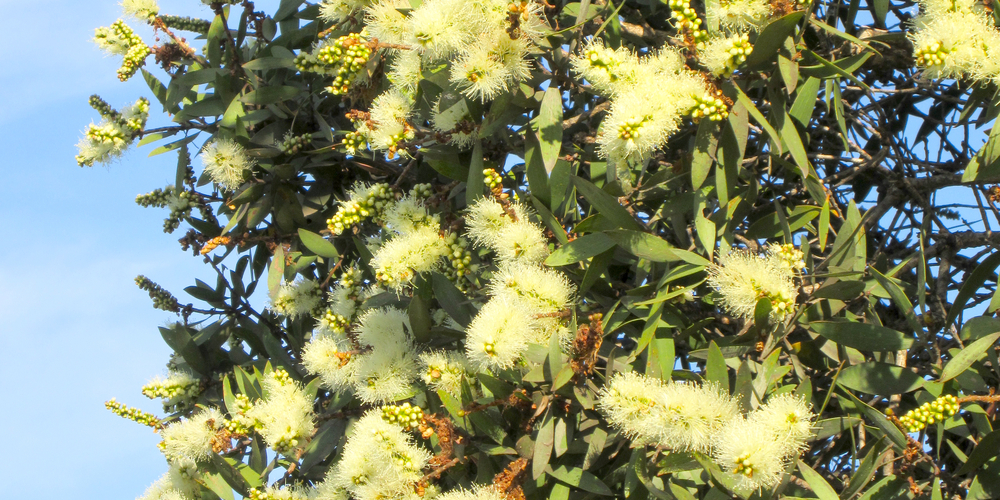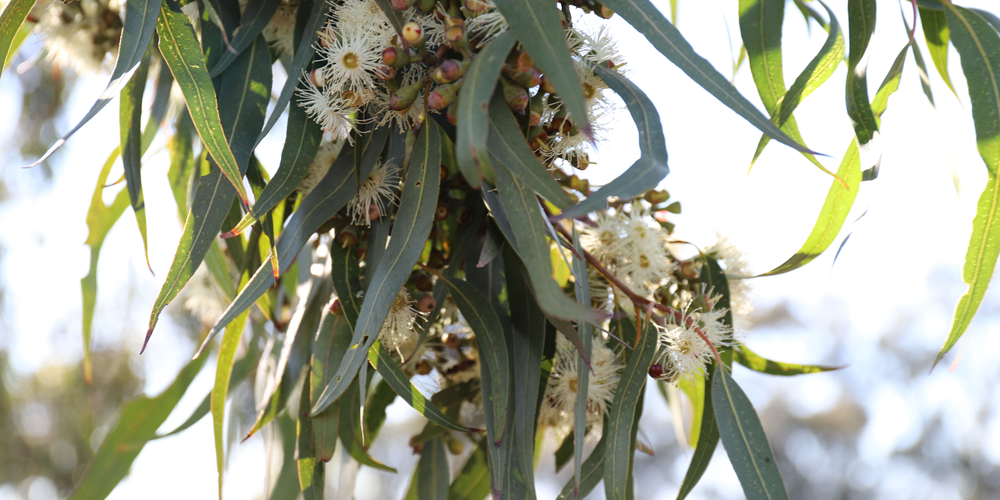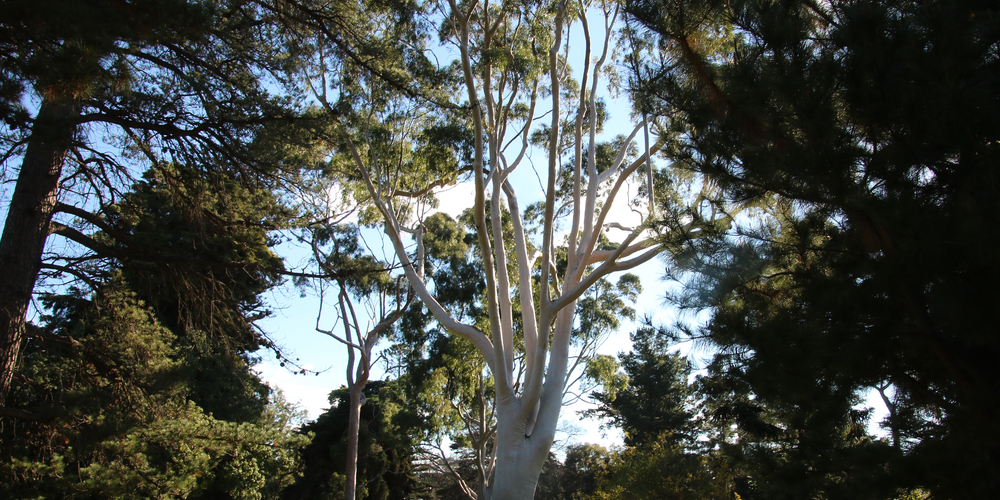Eucalyptus lemon bush is a plant that many people are familiar with. The plant is native to Australia and has seen an increase in popularity in recent years. Known for its ability to thrive in arid climates with its impressive array of health benefits, the plant has become a staple in many homes. This plant provides koalas with a major food source, with its leaves having a distinct lemon scent.

If you’re looking to add a eucalyptus lemon bush to your home, it’s essential to know how to properly care for the plant. This article will give you all the information you need to ensure your eucalyptus lemon bush stays healthy and happy.
| Botanical Name | Corymbia Citriodora |
| Common Name | Lemon Eucalyptus |
| Plant Type | Perennial or Annual |
| Native Area | Australia |
| Size When Mature | 36 inches |
| Bloom Time | Mid-Winter to Spring |
| Sun Requirements | Full sun, can tolerate partial sun |
| USDA Hardiness Zones | 9-11 |
| Soil PH Range | 5.1-5.6 |
| Soil Type | Alkaline, well-draining |
| Water Needs | Low |
What you Need to Know About the Eucalyptus Lemon Bush
The eucalyptus lemon bush is a member of the Myrtaceae family and is closely related to other popular plants such as clove, allspice, and nutmeg. Despite the name, the plant is not actually a bush but is instead a tree that can grow up to 60 feet tall when planted into the ground. However, this plant also grows well when planted in a pot to keep its size under control. You can expect its size to grow up to 36 inches in a pot.
The plant is characterized by its oval-shaped leaves that are about 2-4 inches long and have a deep green color. The undersides of the leaves are a paler green and are covered in a white, powdery substance. This substance is actually called “bloom” and helps protect the plant from the sun and pests. The eucalyptus lemon bush also produces small, white flowers with a yellow center. Its flowers bloom from mid-winter throughout spring.
Compared to other citrusy herbs, it’s more drought tolerant and can survive on average to poor soil as long as it has good drainage.
This plant is also known for being very easy to care for and is an excellent choice for beginner gardeners. It is a very resilient plant that can tolerate a wide range of conditions, which we will discuss in more detail later on.
How to Care for a Eucalyptus Lemon Bush
Now that you know a little bit more about the eucalyptus lemon bush, it’s time to learn how to care for it. Here’s everything you need to know about growing and caring for a thriving Eucalyptus Lemon Bush.
Light
The plant is native to Australia and can be found in tropical and subtropical regions. It thrives in full sun but can also tolerate partial shade. If planting in a pot, make sure to place it in a location that receives plenty of sunlight, ideally near the window. Rotation is not necessary, but if you happen to move the pot, do so slowly so as not to disturb the roots.
Water and Soil Needs
The eucalyptus lemon bush grows best in well-draining soil that is alkaline. The PH of the soil should be between 5.1-5.6. As it is drought-tolerant, you don’t need to water the plant too frequently. In fact, it’s best to let the soil dry out in between watering. During spring, you don’t have to water your eucalyptus lemon bush daily.
However, during the summer months, the soil in your potted Eucalyptus lemon bush usually dries within the day. Check your soil between watering by sticking your finger about 2 inches into the potting mix. If it feels dry, it’s time to water.
If you live in an area with high humidity, you may need to water more frequently. Likewise, if you live in a very dry climate, you may need to water less often.
Temperature Requirements
This plant is native to Australia but can now be found in many other countries, including the United States, Mexico, South America, and Africa. The eucalyptus lemon bush can survive in USDA climate zones 9-11 and can tolerate temperatures from -10 to 104 degrees Fahrenheit.
Fertilizer
An organic, slow-release fertilizer is the best fertilizer to use on a Eucalyptus Lemon Bush. This type of fertilizer is best because it releases the nutrients slowly over time, preventing over-fertilizing and keeping the plant healthy.
Common Diseases
The eucalyptus lemon bush is a hardy plant that is resistant to most pests and diseases. However, it can still be affected by some common issues, including aphids, mealybugs, scale insects, and whiteflies.
Aphids are tiny, sap-sucking pests that can cause yellowing of the leaves and stunted growth. Mealybugs are white, fuzzy pests that feast on plant juices. Scale insects attach themselves to the plant and suck out the sap, leading to yellowing leaves and stunted growth. Whiteflies are tiny, white pests that fly around plants and feed on the sap. When you notice any of these pests on your plant, it’s best to treat them immediately by using insecticidal soap or horticultural oil.
Eucalyptus Lemon Bush Propagation
The best way to propagate a eucalyptus lemon bush is through stem cuttings. This can be done by taking a 6-8 inch cutting from an existing plant and planting it in moist, well-draining soil. Be sure to remove any leaves from the bottom half of the cutting and make a clean cut just below a leaf node. Once the cutting has rooted, it can be transplanted into a larger pot or garden bed.
Eucalyptus Lemon Bush Pruning
It’s important to remember that Eucalyptus Lemon Bush grows pretty quickly and, if planted in a pot, will need to be pruned regularly to keep it from becoming too large. Pruning also helps encourage new growth and keeps the plant looking its best.
To prune your eucalyptus lemon bush, start by trimming back any dead or damaged branches. Next, cut back any longer branches to the desired length. Finally, shape the plant as needed by trimming back any stray or unwanted branches.
Eucalyptus Lemon Bush: Final Thoughts
The eucalyptus lemon bush is a hardy plant resistant to most pests and diseases. However, it can still be affected by some common issues, including aphids, mealybugs, scale insects, and whiteflies. When planted on the ground, it can abundantly grow and provide wonderful fragrant leaves that can be used for various purposes.
It is a fast-growing plant and will require pruning, especially if it is planted in a container. Pruning will also promote flowering. Fertilize the plant with a balanced fertilizer every month during the growing season. Be sure to water regularly, especially when the plant is young.

